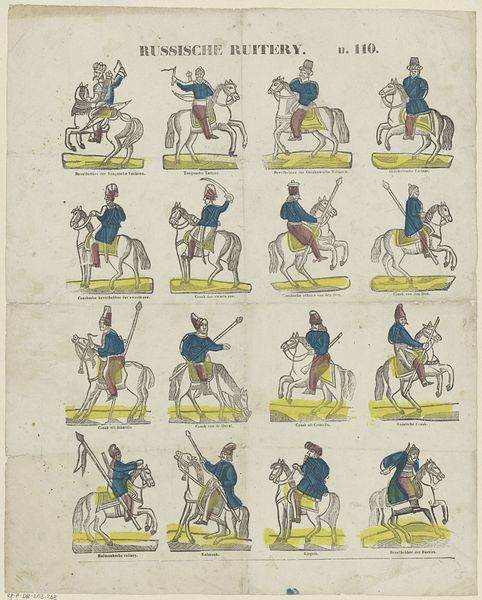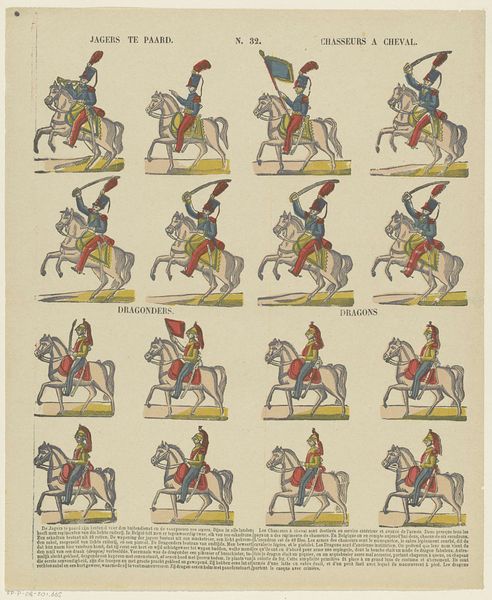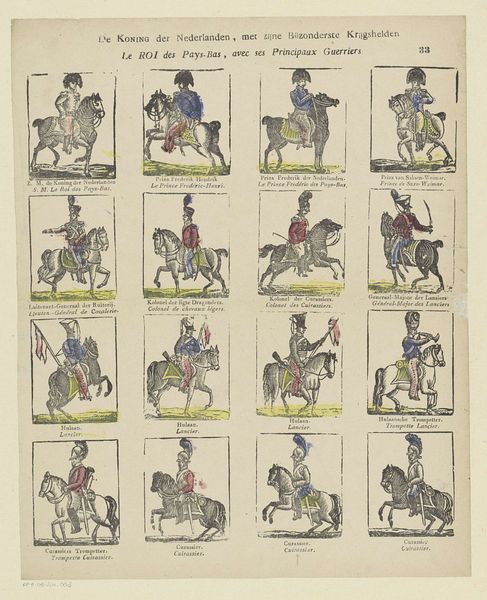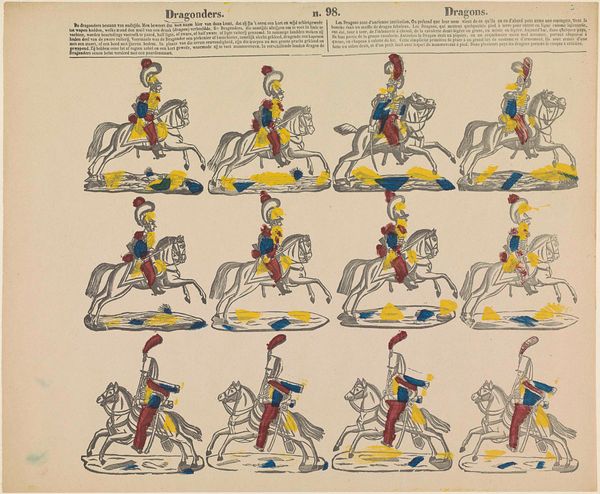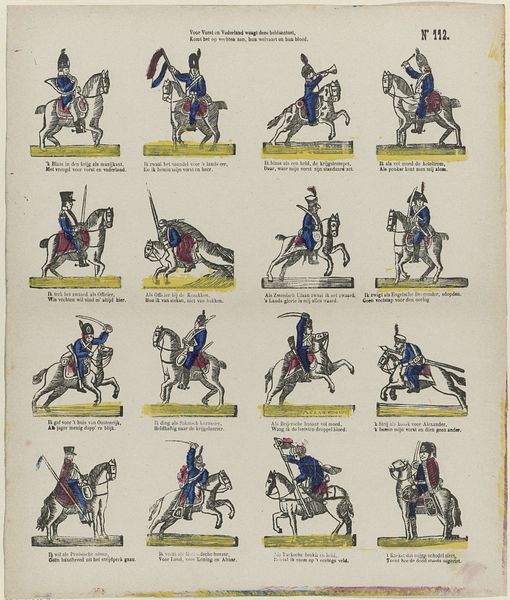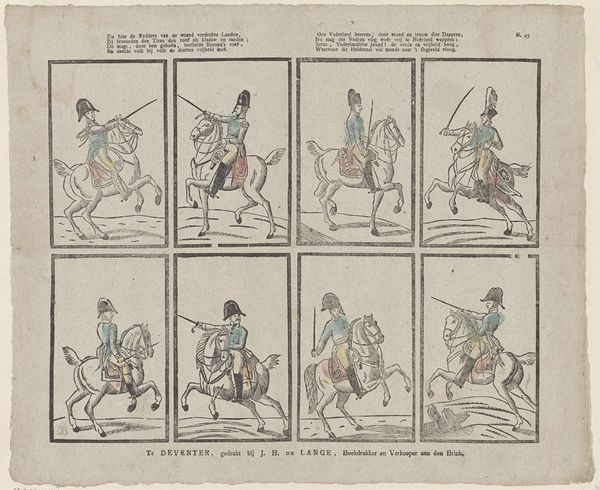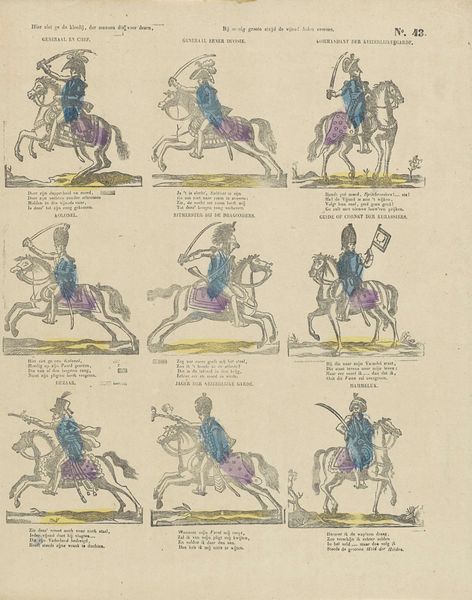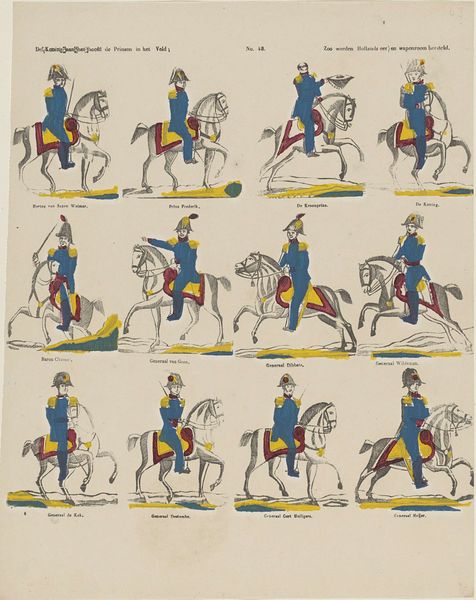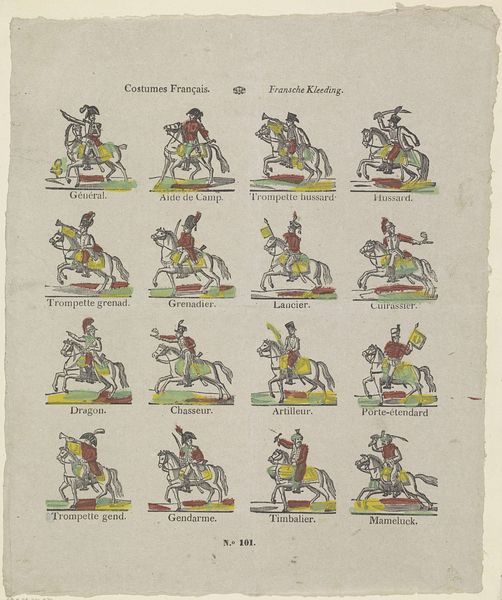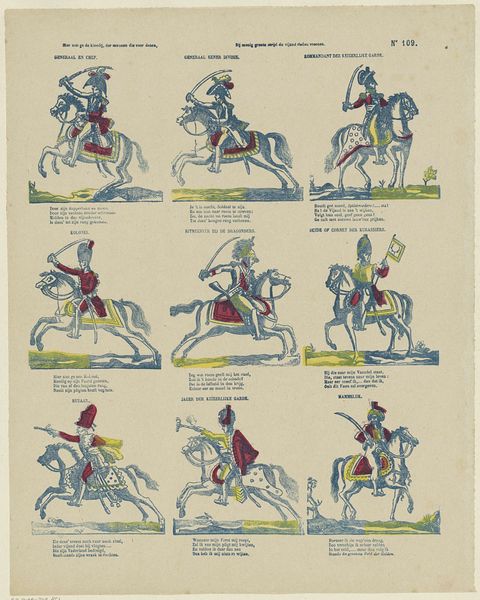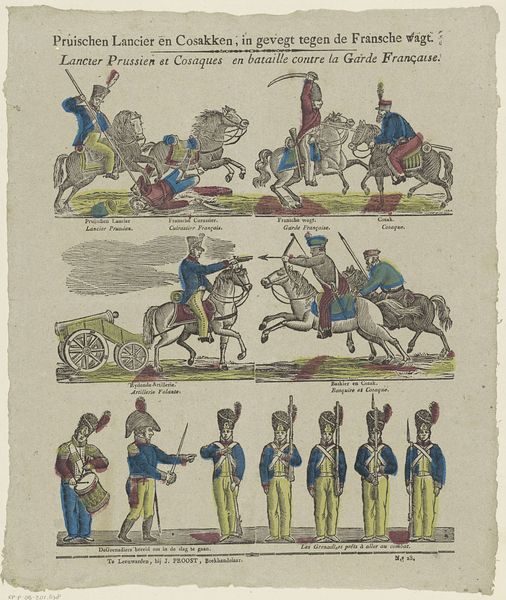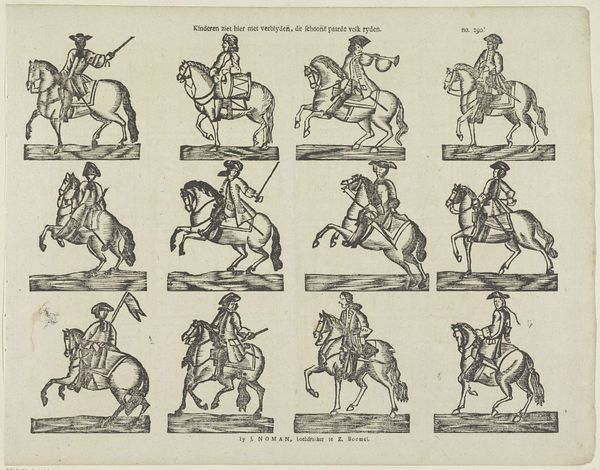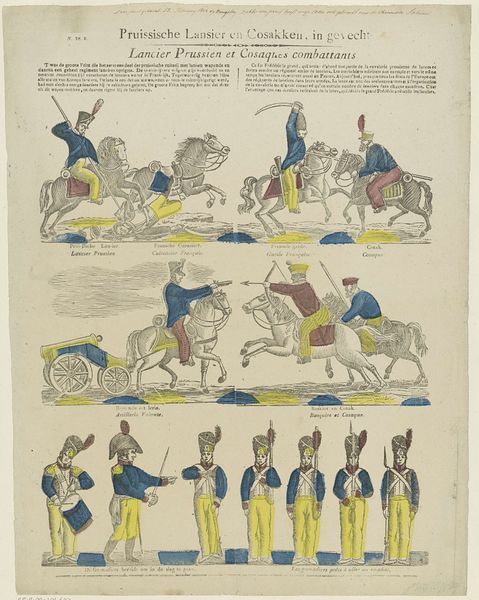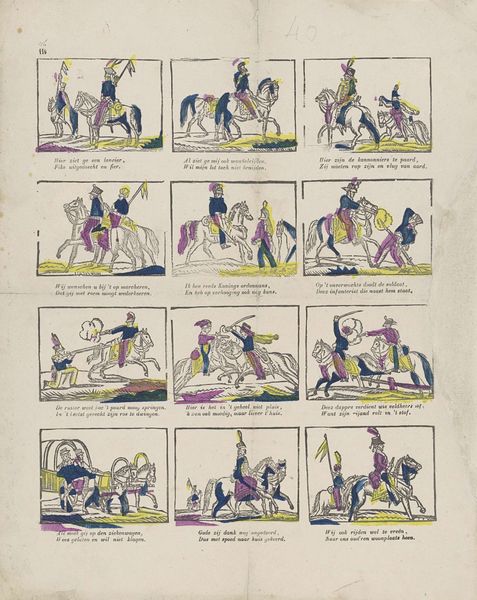
print, engraving
#
portrait
#
neoclacissism
# print
#
romanticism
#
genre-painting
#
history-painting
#
academic-art
#
engraving
Dimensions: height 364 mm, width 306 mm
Copyright: Rijks Museum: Open Domain
Curator: This engraving, created between 1800 and 1833 by Philippus Jacobus Brepols, offers a visual inventory of French cavalry uniforms. Titled "Costumes Français/ Fransche Kleeding", it's housed right here at the Rijksmuseum. Editor: My first thought is "order." The grid layout, the clean lines—it feels almost like a catalog of power. The colors, while restrained, do add a touch of pomp. Curator: Precisely! The piece reflects the Neoclassical fascination with order and classification that was sweeping through Europe at the time. Each horseman is labeled with his rank and function. Consider the historical context; post-revolution, France was eager to codify everything, including military attire, projecting an image of controlled power. Editor: Visually, the bright blue tunics jump out. Blue historically symbolizes loyalty, vigilance, and justice. Then you see the varying headgear and weaponry, which signal unique roles, the trumpet being carried by those cavalry members and the flag that one figure has that must represent France and its armies, it seems that these visual elements would inspire national identity during a time of much tumult for France. Curator: Yes, the standardization of these uniforms itself would’ve bolstered morale and a sense of collective identity, moving away from the excesses of pre-revolutionary fashion towards a more utilitarian ideal, at least for the army. Uniformity as unity! This print wasn’t simply about fashion; it was about crafting an image of military strength for both internal and external consumption. Editor: Though seemingly objective, even a military fashion plate holds symbolic weight! Seeing these figures, ready for battle or parade, is an encapsulation of aspiration. In a rapidly changing world of European monarchies and nascent nation states, there is an inherent timeless appeal in them. Curator: Indeed. Looking at "Costumes Français" offers us a glimpse into how even clothing becomes a carefully orchestrated form of national representation during a crucial era. Editor: And a reminder that, even in uniformity, powerful symbols endure, speaking to deep cultural values.
Comments
No comments
Be the first to comment and join the conversation on the ultimate creative platform.
